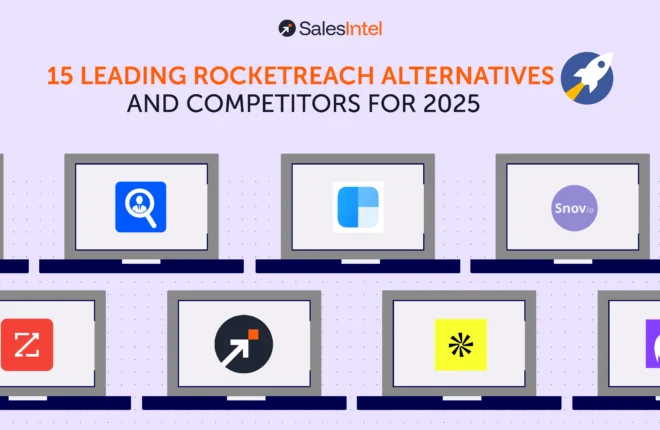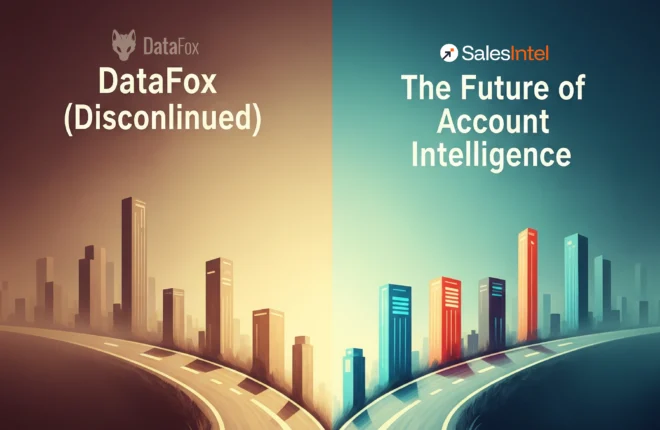Your marketing efforts may have cast a wide net, but the results aren’t what you expected. The problem is that you aren’t targeting your audience precisely enough. Instead of focusing on a broad audience, target a specific Total Addressable Market (TAM). This group not only needs your product or service but is also open to your message.
By focusing on these top possibilities, you’re fishing in a smaller pond, where the big fish hide. These leads will interact with your materials and evaluate your services.
Once you’ve caught their interest, use a targeted nurture campaign to address their requirements and pain points. This tailored strategy boosts the possibility of conversion, transforming prospects into delighted customers.
In this article, we’ll discuss the five crucial steps to generating targeted leads and grow your business.
How To Generate Targeted Leads?
Effective targeted lead generation extends beyond identifying a set of people to approach. Generating leads requires careful planning and solid execution. Ready to skip the guessing and create a clear, concrete strategy to attract and engage your audience?
Step 1: Define Your ICP
Building a solid foundation is an effective first step in generating targeted sales leads. To begin, identify and research your total addressable market (TAM) and your ideal customer profile (ICP).
Your ICP identifies the customers you should target and allows you to exclude companies that don’t meet your criteria.
Your TAM determines the size of your sales-targeted lead pool and the amount of income you can expect from those leads.
Set sensible revenue targets for your team to work toward. These might include boosting month-over-month income, increasing monthly qualified leads, and lowering quarterly customer churn.
Step 2: Create a Database
Once you’ve identified your ICP and TAM, you can begin accumulating contact information.
Traditional data collection and capture methods can be used; however, doing so manually takes more time and increases the possibility of human mistakes.
To avoid this, many businesses prefer to invest in sales intelligence products such as SalesIntel, which help automate the focused B2B lead creation process and increase the targeted lead database.
Right now, you might be thinking: “Where I can buy focused leads.”
Whatever you do, do not purchase leads. Lead lists are not always accurate or GDPR compliant, which might result in a significant fine.
Step 3: Segment Your Listings
Creating buyer personas and segmenting your prospecting lists will be highly beneficial.
It is entirely up to you how you want to approach this. However, there are four significant forms of market segmentation you may use as inspiration:
- Demographic segmentation refers to the physical and professional characteristics that separate prospects.
- Psychographic segmentation refers to the ideas and views that differentiate clients.
- Behavioral segmentation refers to activities and behaviors that separate purchasers.
- Geographic segmentation refers to the geographic aspects that separate sales prospects.
This data-driven strategy for producing targeted business leads keeps you and your team on track while focusing on smaller groups of prospects who are more likely to join your sales funnel.
Step 4: Target and Engage
After you have divided your data lists, you can begin your outreach.
Each persona will require well-thought-out material with a distinct message, and having a simplified database of target leads will make it much easier to tailor your content to each market segment.
Before producing content for your outbound lead generation initiatives, refer to your buyer personas and ask:
- What pain points can I alleviate for my prospect?
- How can my product or service help my prospect succeed?
- What kind of things (images, videos, gifs) as a support to your content?
Remember that each persona will require material tailored to the specific stage of their buying journey.
Step 5: Nurture Relationships
Once you’ve qualified and filled your pipeline with relevant B2B prospects, focus on developing connections.
Satisfied customers are more likely to stay with a company and less likely to churn.
They may even refer your product or company to their colleagues. This leads to more recommendations and a cheaper customer acquisition cost (CAC).
The most effective strategy for developing relationships with your buyers is to enroll them in a nurturing program. By nurturing your buyers, you can provide them with the information they need at the right time.
You’ll also be able to obtain insights into what resonates with them, which will help you strengthen your brand and marketing.
Ten Reliable Ways to Get the Targeted Leads
Creating and delivering content to more targeted prospects is easier said than done. It requires communication, alignment with marketing, and a well-thought-out sales plan, particularly if you’re looking for qualified company leads.
Here are ten effective methods for B2B businesses to generate high-quality leads:
1. Industry-Specific Directories:
Recognize and choose reliable online directories and databases for your industry or niche.
Utilize the directories’ filters and search features to refine your audience based on criteria such as company size, location, and industry.
To enhance your lead generation results, utilize the extra services offered by these directories, such as advanced search features and membership perks.
Use LinkedIn Sales Navigator’s advanced search options to identify potential leads that meet your ICP criteria.
This may include industry, company size, title, job title, and other information like technographics and firmographics.
Find reputable B2B platforms, industry publications, and online communities where your target audience engages with your content.
Create materials that address the significant issues and obstacles faced by your audience, such as articles, presentations, case studies, or webinars.
Work with these platforms to share your content with your audience by writing guest blog posts, creating sponsored content, or building content partnerships.
Include clear calls-to-action in shared content to encourage readers to engage more with your brand by downloading a resource, registering for a webinar, etc.
4. Trade Shows and Conferences:
Research upcoming trade shows, conferences, and industry events relevant to your market.
Organize your presence by booking a booth, sponsoring relevant sessions, or securing a speaking engagement.
Create attractive marketing materials such as brochures and presentations to highlight your business.
Network with other attendees, share contact information, and quickly connect with post-event managers.
5. Buying B2B Data:
Choose a reputable provider that provides accurate and up-to-date B2B data for your target market.
Set specific criteria for your target companies or personas, such as industry sector, company size, geographic location, or job titles.
Check the data quality by asking the supplier for samples or references before purchasing.
Complying with relevant data protection regulations, such as GDPR or CCPA, must be ensured to avoid legal issues related to unsolicited communications.
6. Cold Email Outreach:
Customize your outreach messages by naming recipients and referencing relevant information about their business or industry.
Be clear about your product or service’s value proposition and how it addresses the recipient’s specific pain points or challenges.
Avoid excessive promotional language or attachments to keep your email short, focused, and respectful of the recipient’s time.
Follow up diligently but respectfully with prospects who did not respond to your initial contact, and adjust your approach based on their engagement or feedback.
7. Account-Based Marketing (ABM):
Identify key target accounts that align with your ICP and have the potential for high-value relationships.
Develop personalized marketing campaigns and content tailored to the specific needs, challenges, and goals of your target audience.
Leverage multiple channels and touchpoints to engage with key stakeholders within the target accounts, including email, social media, personalized ads, and direct mail.
Continuously monitor and measure the effectiveness of your ABM efforts, adjusting your strategies and tactics based on real-time feedback and performance data.
8. B2B Lead Magnets:
Conduct market research to identify common pain points, challenges, or informational needs within your target B2B audience.
Create high-value lead magnets such as whitepapers, eBooks, industry reports, or templates that address these identified needs and provide actionable insights or solutions.
Promote your lead magnets through various channels, including your website, blog, social media, email newsletters, and industry partnerships.
Use gated forms or landing pages to capture contact information from prospects interested in accessing your lead magnets and follow up with targeted nurturing campaigns.
9. Partnership with B2B Service Providers:
Identify B2B service providers or agencies that offer products or services that complement your offering but solve a different pain point.
Create mutually beneficial partnerships through formal agreements or informal collaborations to exchange recommendations, referrals, or co-marketing opportunities.
Profit from each other’s expertise, resources, and networks to expand our reach and deliver added value to your mutual customers.
Maintain open communication and regular collaboration with your partner to ensure long-term partnership success.
10. Customer Referral Programs:
Develop a structured referral program that encourages existing customers to refer new leads to your business.
Communicate to your customers the benefits and advantages of participating in a referral program, such as discounts, rebates, or exclusive offers.
Use resources, such as referral links, email templates, and social media assets, to easily share referrals.
Track and reward successful referrals quickly and demonstrate the impact of their loyalty to other customers.
Implementing these detailed strategies can enhance your lead-generation efforts and help you attract high-quality prospects that are more likely to convert into customers.
How Does SalesIntel Help You Focus On Targeted Leads?
SalesIntel can help you create focused leads by providing important insights and data-driven information about your in-market buyers. Here’s how.
Identifying Target Audience
SalesIntel can help you determine and define your ICP by evaluating data elements such as industry, company size, geographical region, job titles, and more. This information helps you direct your efforts to prospects more likely to become customers.
Accurate Contact Information:
One of the most challenging aspects of lead generation is acquiring accurate contact information. SalesIntel delivers verified contact information including email addresses, phone numbers, and social media accounts. This ensures that your outreach efforts reach the intended recipients.
Behavioral Insight with Intent Data:
SalesIntel can monitor prospect activity, including website visits, social media engagements, and content downloads. This information helps you understand your prospects’ needs and interests, allowing you to adapt your communications and offers based on their research.
Competitor Analysis:
You can find market gaps and possibilities to win clients away from competitors by viewing data on their customers and behavior.
Personalization:
SalesIntel provides extensive information on prospects, such as their work titles, industry technographic data, and firmographic data. This allows you to tailor your outreach messages and offers to increase engagement.
Lead Scoring and Prioritization:
You can rank leads based on various characteristics, such as business size, revenue potential, engagement level, buyer intent signals, etc. This ensures that your sales team concentrates on prospects that are most likely to convert, resulting in increased efficiency and effectiveness.
Continuous Updates:
SalesIntel’s robust database ensures you have access to the most accurate and up-to-date information about your leads. This reduces the chance of wasting time on obsolete or inaccurate data.
All this increases your chance of winning targeted leads.
Based on your ideal customer profile, request a demo to see how it will help you.






